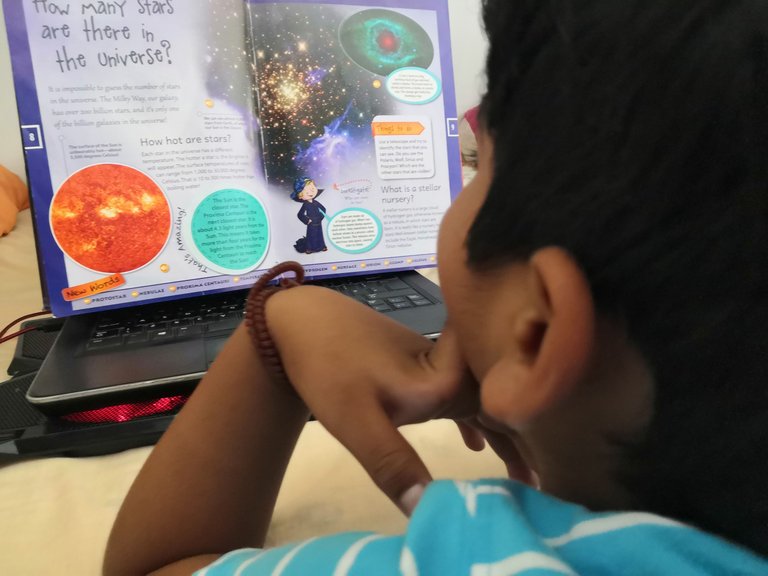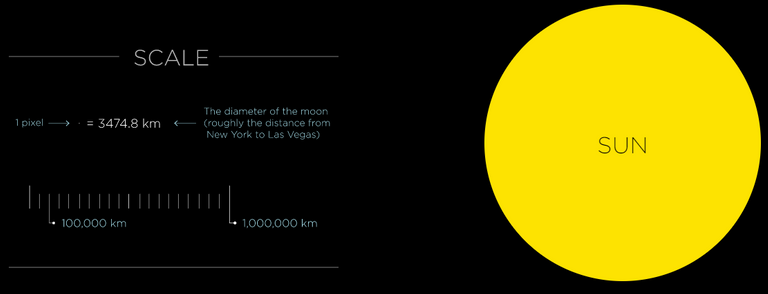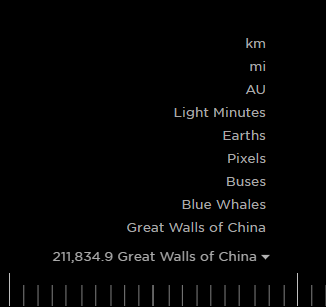Exploring Space, The Solar System, and A Bit of Space Junk
Space Junk
The day started with me and my sister having a discussion about "space junk". I think she was attending a webinar or something on that topic, while I remembered a recent article I heard about a piece of space junk from a SpaceX rocket that will crash on the moon pretty soon. The conversation went on to the ISS and the SkyView app that we use to track it and the other stars and planets in the sky.
In case you're wondering, we don't always have these nerdy conversations, but yeah, these are fun and most are always geared to eventually being able to share them with the kiddos.
The Solar System
As parents, I guess we all have gone through this -- the kids getting in the I-love-space- phase - memorizing all the planets of the Solar System (in addition to that dinosaur phase). Why not? The topic is really interesting and mind-boggling! One answer can lead to another question, and another, and another...

In school, we sure had been at least once asked to make or draw a model of our Solar System and it pretty much looked like the one on the cover of this book below.
The sun is at the center of the Solar System, the planets orbiting around it.

What if we drew the solar system in a more "accurate" scale?
My sister shared this video of Mark Rober (who I never knew was a former NASA engineer. I only watched him a couple of times with the kids when they were following #teamseas) who made a drone Solar System scale model.
The @divinekids and I watched it and were astonished by it! In the video, Mark Rober illustrated the solar system scaled with a soccer ball as the sun.
So what if the sun were the size of a soccer ball? How would a "properly scaled" solar system be modeled?
| Mercury | a fleck of pepper | 10 yards / 9.144 meters |
| Venus | about the size of a head of a pin | 19 yards / 17.3736 meters |
| Earth | the size of a head of a pin, its moon about the size of a grain of salt | 26 yards / 23.7744 meters |
| Mars | a fleck of pepper | 40 yards 36.576 meters |
| Jupiter | grape | 135 yards / 123.444 meters |
| Saturn | a slightly smaller grape | about 2.5 football fields/ 0.22km |
| Uranus | the size of a pea | about 5 football fields / 0.46 km |
| Neptune | the size of a pea | 777 yards / about 8 football fields / 0.71 km |
We were blown!
Want to see it for yourself? Here's a video I am referring to:
If the moon were only 1 Pixel...
Next up, we tried to visit this website which is supposed to show us a map of the solar system if the moon were only the size of 1 pixel. Yep, that very small dot.
We patiently scrolled through the map of minutes after minutes until we reached Pluto (well, technically it is no longer a planet).
Here's the link to the site -
https://joshworth.com/dev/pixelspace/pixelspace_solarsystem.html
Warning: it is a very, very, long scroll!
I will, however, try to share our experience through screenshots taken while scrolling through the website shared above.
Here's the scale he used:

At the bottom of the screen is a ruler that will show how far we are deep into space. There is an icon at the bottom right corner that you can click to simulate the speed of light and scroll automatically. However, unless you have all the time to stare at the screen, I suggest you don't.

There are also options at which scales to use on the ruler - kilometer, mile, AU, light minutes, earths, even Great Walls of China!

There are also short-cut keys at the top of the screen where you can jump across to the planets but where's the fun in that? The website anyway has some entertaining quotes in between vast spaces.

I Guess this is why most maps of the solar system aren't drawn to scale.
It is not hard to draw the planets.
It's the empty space that's a problem.
Reaching the Earth at about 150M KM from the sun was not entirely that long but the distances between the planet get bigger as we went on. I thought we would never reach Mars. Moreso, Jupiter!

To put it further into perspective, the author said,

If this map was printed from a quality printer (300 pixels per inch) the earth would be invisible, and the width of the paper would be 475 feet (1363.98 meters).
And...

You would need 1246 of these screens lined up side-by-side to show this whole map at once.
After reaching Jupiter, we could see our scroll bar was just about halfway through so we started to use the shortcut icons to reach the succeeding planets, way up to Pluto.
The activity was so interesting in many ways. Our imaginations kept running. How small are we compared to the big universe? Our sun is just an average-sized star -- there are stars that are smaller and bigger than it. What happens when a star dies? Can a star be born? What is a blackhole?
Ohhh.... questions! Questions! Questions! Teacher-mommy learns with her students too!
How about you? Have you imagined our solar system in the way presented above?


Electronic-terrorism, voice to skull and neuro monitoring on Hive and Steem. You can ignore this, but your going to wish you didnt soon. This is happening whether you believe it or not. https://ecency.com/fyrstikken/@fairandbalanced/i-am-the-only-motherfucker-on-the-internet-pointing-to-a-direct-source-for-voice-to-skull-electronic-terrorism
Hi arrliinn,
Join the Curie Discord community to learn more.
Thank you!
Your content has been voted as a part of Encouragement program. Keep up the good work!
Use Ecency daily to boost your growth on platform!
Support Ecency
Vote for new Proposal
Delegate HP and earn more
Thanks a lot!
speaking of space junk and the very many satellites orbiting earth, here's another development regarding SpaceX Starlink 30k satellite plan.
NASA says Starlink Gen2 may cause problems for Hubble and asteroid detection
also, the movie i was telling you about last time about space junk, too xD Space Sweepers starring Song Joong-ki!
I hope that movie is English dubbed. 😬
One of the museum type places/educational centres down the road a fair way from me had a scale model solar system walk that we went on with the kids and J's parents. You started at a sculpture of the sun (which was close to the main building) and walked along a track about the width of a single lane road finding planet and moon sculptures along the way. I don't remember if we managed to walk the whole thing (the kids were quite small at the time) but I do remember it was a very long walk XD
I'm trying to remember if I've encountered this website you're talking about previously, I thought I hadn't but then as I was reading your description, especially about the quotes that are in the huge bits of space between planets, and it's sounding familiar but if I have it would have been a while ago. May be worth another visit soon ;D
Having interchangable roles and learning together is the best :D
Oh! That museum sounds fun! It's good because it can give a better perspective than how we see them illustrated in books. I'm not sure there's such a museum nearby us so we'll settle for a virtual solar system tour for now. :D
My eldest was too keen to finish scrolling, but the younger two weren't too interested they got bored halfway through to Jupiter. lol
In fairness to them there's a LOT of space between planets once you get past Mars XD
I think it is also time for me to teach my son about the solar system. Thank you, you just gave me the idea the teach it to my son as early as possible. Good evening!
I bet it will really be interesting for him.
You are right, I think my son is going to love it.
oh, solar system!
I was going to explain it to my boy too
and I even was seeking for a small model of it, or maybe can we make it by ourselves?:)
have you any ideas how to?:))
Sometimes we make playdough models of the planets. It's also a great way to explain seasons/ night and day. We shone flashlight to the "earth" so we see how it is night on one side and day on the other side. Theif we have more time, we make the other planets. Otherwise, we just check out the books. 😉
great idea! I'll use it😍
Thanks for your contribution to the STEMsocial community. Feel free to join us on discord to get to know the rest of us!
Please consider delegating to the @stemsocial account (85% of the curation rewards are returned).
You may also include @stemsocial as a beneficiary of the rewards of this post to get a stronger support.
Hello, kuya! Did you know that when I was a kid, I was like you and wanted to be an astronaut? :)
A super learning without a doubt also today there are many alternatives in applications and games that allow us to show children the solar system as well as books and we can not forget the models that are very useful.